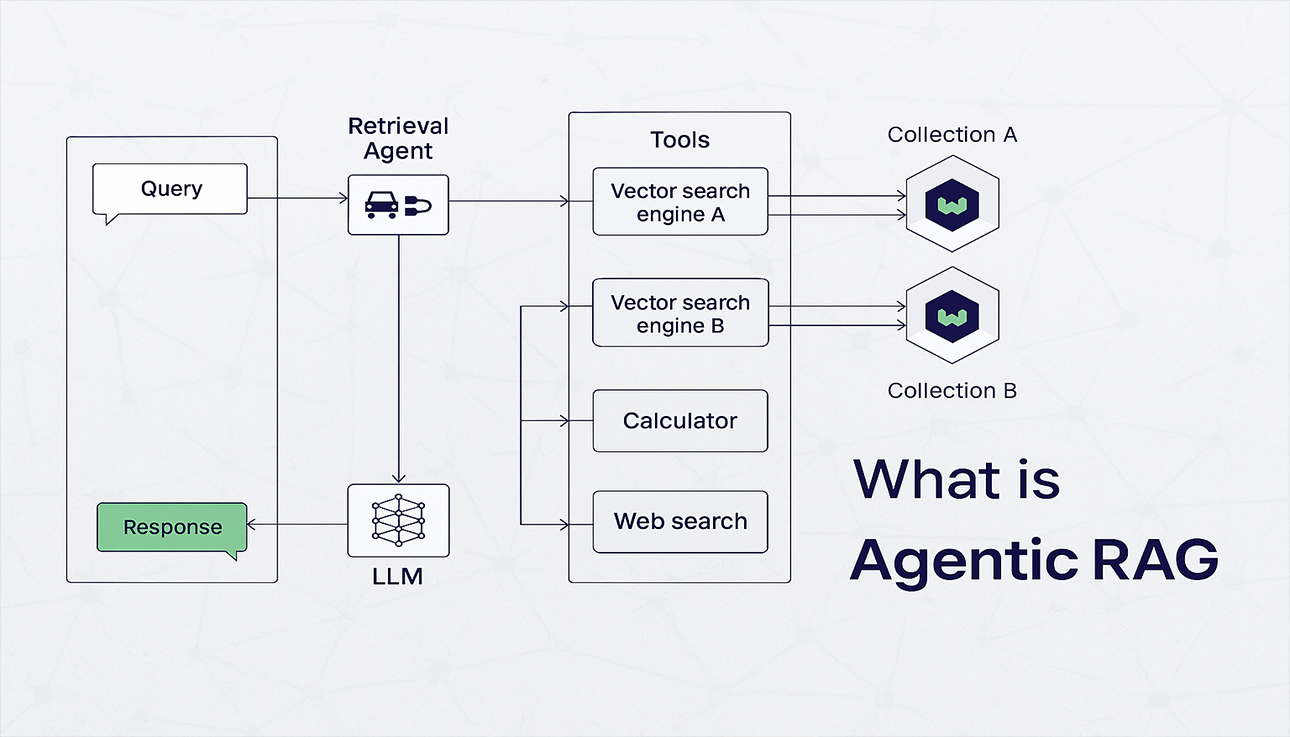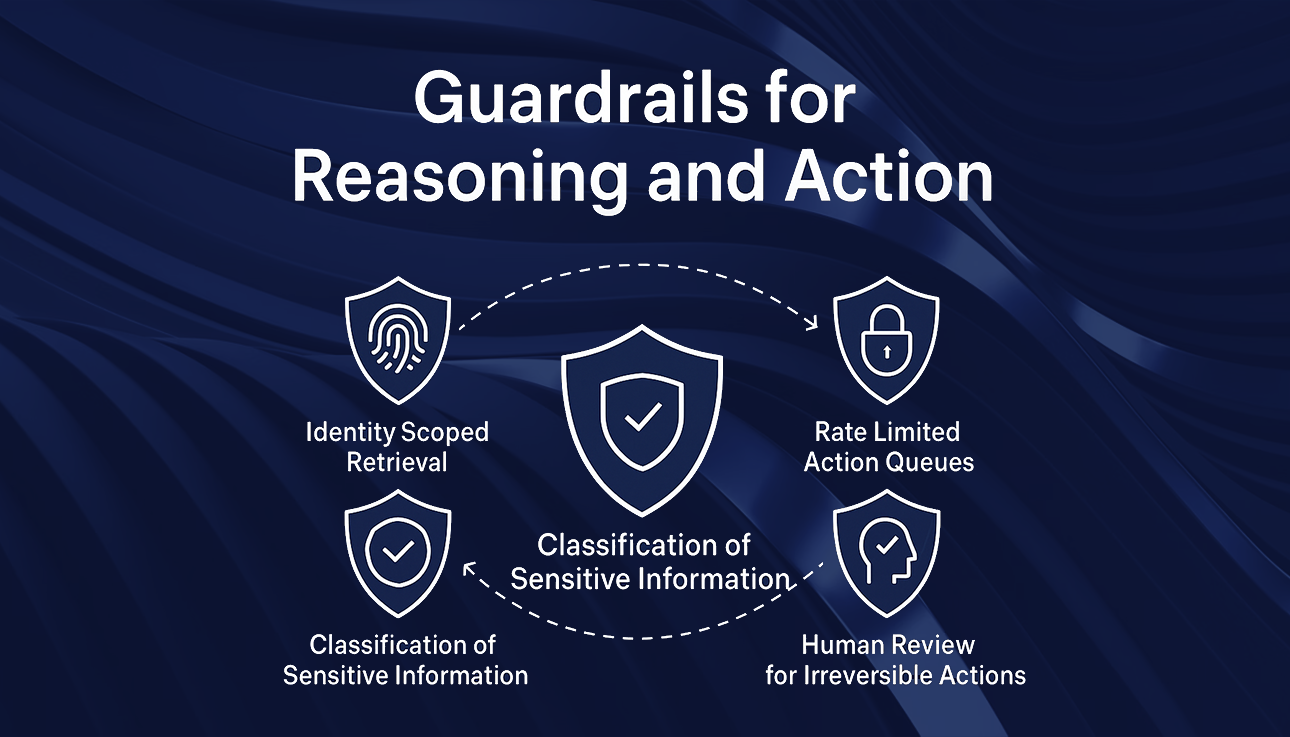Agentic AI for Enterprise
Why Agentic AI for Enterprise is Different
Most AI deployments remain reactive. A user asks and a model responds. Agentic AI shifts this paradigm by giving systems the capacity to reason about objectives, plan multi step work, choose the right tools for each stage, and self correct when outcomes deviate from expectations. Anorra® adopts this approach so that enterprise teams can move from prompt response chat to outcome driven execution under strict privacy and governance rules. Instead of a single monolithic model, Anorra® coordinates a set of specialized, policy aware agents that collaborate to achieve business goals, trace their decisions, and continuously improve.
How Reasoning Powers Robust Autonomy
Reasoning in Anorra® is not a single shot calculation. Each agent uses a structured planning loop. First it breaks down the request into discrete steps. Then it proposes an action plan, consults relevant organizational context, executes tasks, evaluates results, and repeats as needed. This cycle is supported by lightweight safeguards including policy checks, data lineage tracking, and confirmation gates for critical steps such as applying production configurations or approving financial transactions. The result is autonomy with accountability, where agents move quickly but still meet compliance and oversight requirements.
Self Learning Without Risking Model Drift
Enterprises often worry about models that change without notice. Anorra® avoids this problem by separating learning from the core model. Agents learn through structured memories, approved playbooks, and curated feedback logs rather than altering the base model itself. When an agent finds a more effective path such as a faster data query or a higher quality source, it records that discovery, associates it with context, and proposes an update to the shared knowledge layer. Updates are reviewed and approved, making improvements permanent and auditable without retraining the entire system.
Three Databases, One Memory Fabric
Anorra® uses a three tier memory architecture so agents can access the right information at the right time with a verifiable source of truth.
- Vector Semantic Memory (ChromaDB): Stores embeddings for unstructured data including documents, meeting transcripts, support tickets, and historical conversations. This layer is optimized for semantic recall and similarity search.
- Relational Memory (PostgreSQL and MySQL): Holds structured entities such as tasks, events, configurations, policies, and execution logs. This supports reliable joins, constraints, and detailed time based analytics.
- Operational Logs and Observability: Maintains records of actions, results, errors, and resolutions. Agents use this history to detect trends, prevent regressions, and improve future planning.
This separation of responsibilities allows Anorra® to reason across different types of information while meeting enterprise level audit and integrity standards.
Custom RAG That Puts Context Before Computation
Retrieval Augmented Generation in Anorra® is adapted for enterprise constraints. Before generating any response, the system asks what information is necessary. The retriever searches vector memory using domain aware filters, applies access control rules, intersects results with relational facts for accuracy, and ranks them using task specific signals such as freshness, authority, and provenance. Only after this preparation does generation occur. When exact figures or compliance text are needed, the generator defers to validated snippets and citations instead of making assumptions.

What Agentic AI Added to Anorra®
Adding agentic capabilities transformed Anorra® from a reactive assistant into an autonomous operator. Key advantages include:
- Goal Driven Execution: Agents take objectives such as synchronizing knowledge sources weekly with exception reporting, plan the steps, and deliver artifacts like change logs, dashboards, or reconciliation reports without continuous prompting.
- Tool Orchestration: Agents select the right tool for each task. They query SQL for reliable data, consult vector memory for context, trigger connectors for external systems, or request human confirmation at key decision points.
- Self Correction: If a result fails validation, agents examine intermediate steps, choose an alternative approach, and retry before escalating to a human.
- Institutional Learning: Every effective solution and resolved incident becomes a reusable playbook with details on prerequisites, risks, and expected value. Future runs start from a smarter baseline.
- Traceability: Every decision is documented with the reason it was taken, the data used to support it, and the policies that applied. This builds confidence for use in regulated industries.
Enterprise Grade Guardrails for Reasoning and Action
Autonomy is balanced with oversight. Anorra® uses layered safeguards including identity scoped retrieval, classification of sensitive information, rate limited action queues, and human review for irreversible actions. Agents must justify external calls with a clear rationale and every output is checked against approved sources. This allows safe automation while maintaining operational speed.
Pattern Library for Reusable Agent Blueprints
To accelerate deployment, Anorra® includes a library of proven agent blueprints. Examples include knowledge synchronization with duplicate detection, policy compliant document drafting with automated clause insertion, root cause investigation across logs and metrics, and workflow optimization based on trend analysis.
Observability That Closes the Loop
Anorra® treats observability as an essential capability. Agents record telemetry on planning steps, retrieval quality, tool usage, and validation results. This data is aggregated into a live view showing where time is spent, which retrievals provide value, and which playbooks deliver the best results. This makes optimization a data driven process rather than trial and error.
From Pilots to Production
Many enterprise AI projects stall after successful pilots. Anorra® bridges this gap by embedding privacy, security, and change control into its foundation. Data remains in the customer environment, improvements are versioned, and rollbacks are predictable. Teams can start with a single agent, validate performance, and scale to a portfolio of agents without rewriting core infrastructure.

How to Evaluate Readiness
Success with agentic systems depends on more than raw model capability. Knowledge quality, clearly defined policies, and strong integration practices are essential. Before deployment, confirm that your sources are trustworthy, retention rules are documented, and system connectors are reliable. If any of these are weak, address them first, because agents will amplify both strengths and weaknesses.
Continuous Improvement in Production
Anorra® is designed for ongoing enhancement after deployment. Performance data is continuously reviewed to identify slow steps, irrelevant retrievals, or bottlenecks in workflows. New playbooks are proposed by agents based on this data, tested in controlled runs, and added to the library when proven effective. This ensures that the system gets better over time without sacrificing stability.
Learn more about the platform and its private, on premises approach here: Agentic AI for Enterprise.
© Anorra® — private, secure, local agent orchestration for the enterprise.
When you subscribe to the blog, we will send you an e-mail when there are new updates on the site so you wouldn't miss them.

Comments